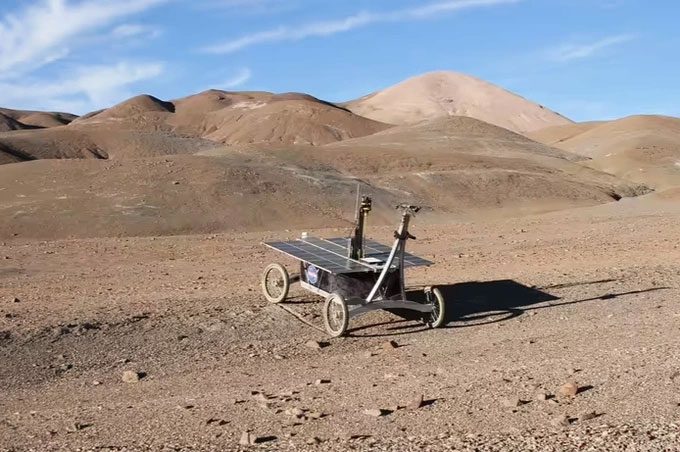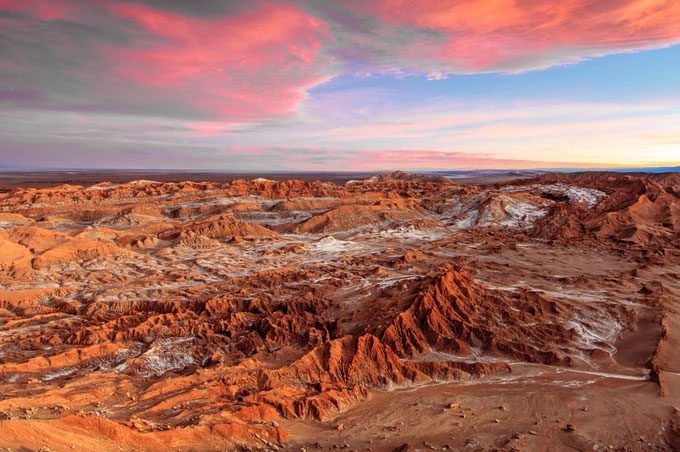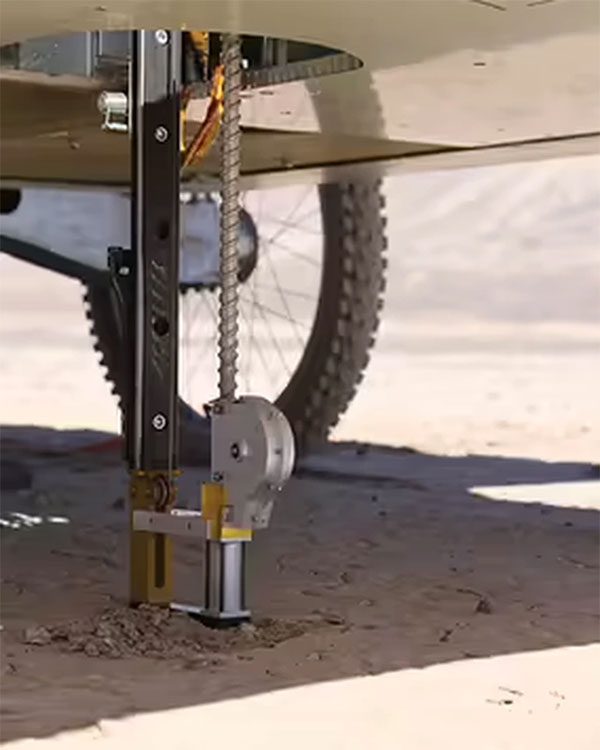The discovery of bacteria hidden deep beneath the surface of the Atacama Desert may open new hopes for the search for life on Mars.
When we think of Mars, we immediately picture a barren planet, with dry and hot deserts. In fact, scientists have found many similarities in climate between Mars and some of Earth’s most extreme deserts.
This has motivated them to launch a search for life in the Atacama Desert (Chile), which has been dubbed “Mars on Earth.”

NASA’s rover conducting missions in the Atacama Desert to simulate Martian conditions (Photo: Stephen Pointing).
The Red Planet Right Here on Earth?
The Atacama is a desert located in northern Chile and a small part in southern Peru. It is extremely harsh for life.
Firstly, it is the driest place on Earth, with an average annual rainfall of less than 50 mm. Each year, the Atacama receives an average of only 25 mm of rain. In some areas of this desert, it has never rained, or precipitation occurs only after decades.
Moreover, cacti cannot thrive in this desert. Due to the arid atmosphere, oxidation does not occur in metal materials.
Brian Glass, who is responsible for a NASA experimental study, once remarked: “If you happen to bleed from a rock in the Atacama Desert, you need not worry about infection, because pathogens cannot survive there.“
In summary, decay cannot occur for anything in this waterless desert. Additionally, other factors such as high altitude and saline soil make this environment extremely toxic to life.

The pristine beauty of the Atacama Desert. (Photo: Getty).
However, Professor Stephen Pointing from Yale-NUS College in Singapore believes that there are still bacteria existing beneath the habitable surface of the Atacama Desert. These organisms lie beneath the scorching layer of soil and sand and may provide new prospects for the search for life on Mars.
To realize this idea, Professor Pointing’s team deployed a sampling and drilling device attached to a rover in the Atacama Desert to collect soil samples containing bacteria at a depth of about 80 cm.
Through DNA sequencing, researchers confirmed the existence of some resilient bacteria. This experiment raises hopes that if bacteria also thrive just below the surface of Mars, a robot could find them.
“These results provide a basis for optimism that bacterial life could endure conditions beneath the surface of Mars,” said Professor Pointing.
However, the expert warns that it will be very challenging for Martian rovers since they are operated remotely. Additionally, there are difficulties in transporting and analyzing these bacterial samples.
He likened this process to “finding a needle in a haystack” when discussing the search for bacteria that represent life on Mars, although hope still exists.
Potential Life Beneath the Surface

The rover digging into the ground to search for bacteria. (Photo: Stephen Pointing).
If microbial life is found on Mars, it would undoubtedly be the most significant scientific discovery in human history.
In reality, the reason we have not yet found life is that rovers have only operated on the surface of planets, rather than delving deep into the ground.
According to Professor Pointing, as depth increases, the microbial community may become more prevalent, as bacteria can thrive in soil, even in extreme environments such as highly saline or alkaline conditions.
“Things start to get much more interesting and truly stranger just beneath the surface,” he stated.
The detection of methane in Mars’ atmosphere is also a crucial factor that energizes the search for life.
It is known that on Earth, many biological and geological processes can produce methane. Even bacteria can convert methane into energy.
Thus, finding highly specialized bacteria thriving in the extremely dry, saline, and alkaline soil of the Atacama Desert would serve as evidence that bacteria using methane could also flourish on the Red Planet.


















































